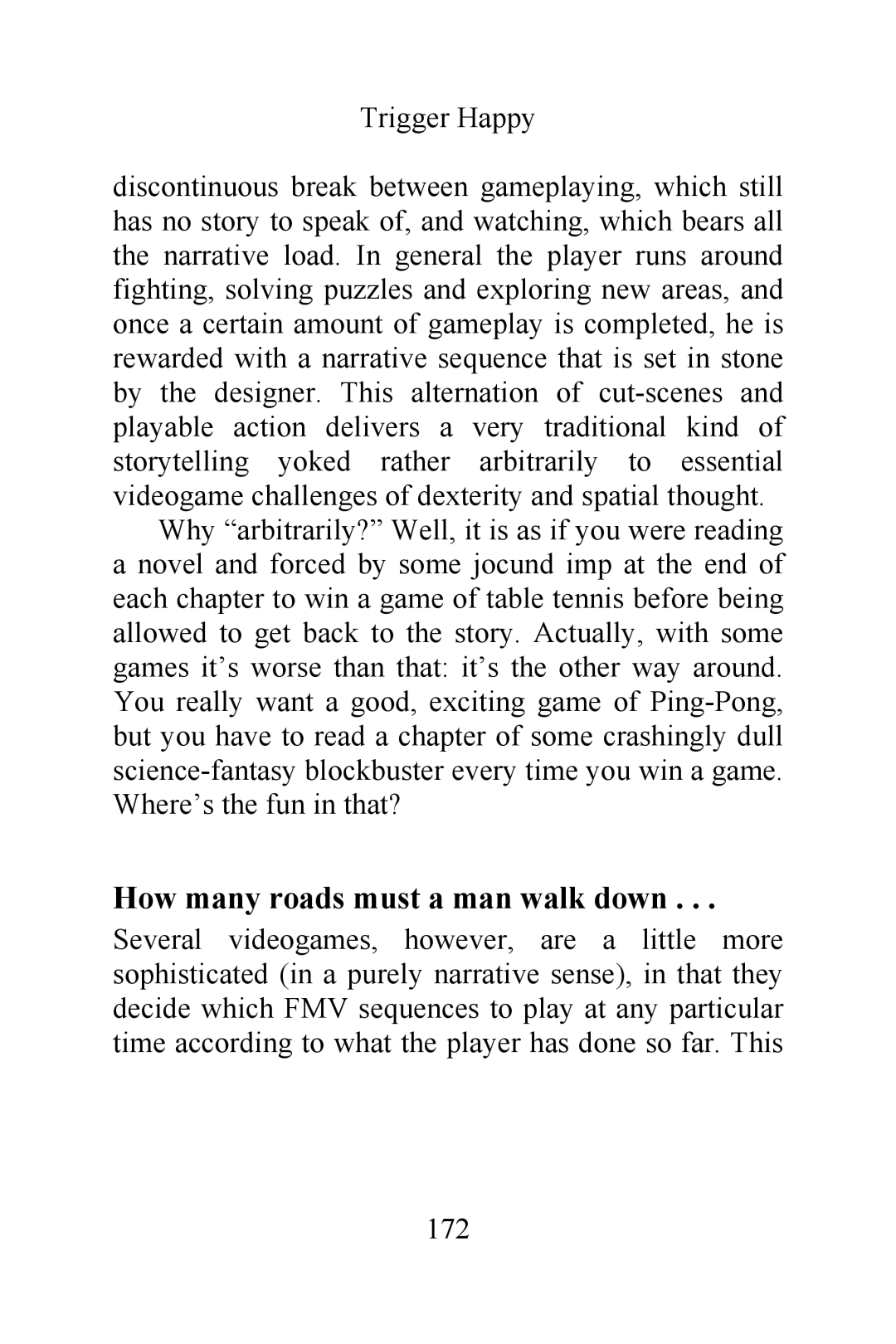Trigger Happy
discontinuous break between gameplaying, which still has no story to speak of, and watching, which bears all the narrative load. In general the player runs around fighting, solving puzzles and exploring new areas, and once a certain amount of gameplay is completed, he is rewarded with a narrative sequence that is set in stone by the designer. This alternation of
Why “arbitrarily?” Well, it is as if you were reading a novel and forced by some jocund imp at the end of each chapter to win a game of table tennis before being allowed to get back to the story. Actually, with some games it’s worse than that: it’s the other way around. You really want a good, exciting game of
How many roads must a man walk down . . .
Several videogames, however, are a little more sophisticated (in a purely narrative sense), in that they decide which FMV sequences to play at any particular time according to what the player has done so far. This
172
